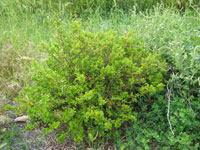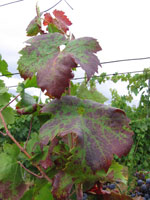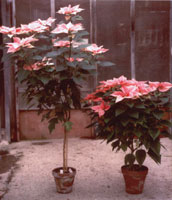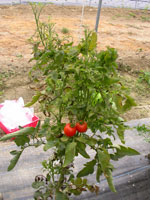EPPO-Q-bank phytoplasmas database
The EPPO-Q-bank phytoplasma database contains DNA sequences (barcodes) of more than 100 strains that are of relevance to phytoplasma detection (International Phytoplasmologist Working Group). The official micropropagated collection of phytoplasma strains is maintained mainly in periwinkle at the University of Bologna (Phytoplasma Collection). The geographic distribution as well as relevant EPPO-protocols for the phytoplasmas can be downloaded from the EPPO Global Database https://gd.eppo.int/
Phytoplasma DNA in the Q-bank collection can be ordered from Dr. Assunta Bertaccini (assunta.bertaccini@unibo.it)
Phytoplasmas are bacteria lacking cell wall that are located in the phloem of plants and in the hemolymph of insect vectors. They are infecting a high number of plant species and are associated with devastating diseases worldwide. A phytoplasma differentiation scheme based on PCR/RFLP analyses of 16S rDNA is a reliable tool for the differentiation that has become a comprehensive and widely accepted system. The 'Candidatus Phytoplasma' species provisional description, refers to 16S rRNA gene sequence with a threshold <98.65% similarity to that of any previously described 'Ca. Phytoplasma' species. However because of the highly conserved nature of the 16S rDNA some additional tools for phylogenetic analyses and finer strain differentiation of phytoplasmas such as rp, secY, secA, tuf, groEL genes, are used as supplementary tools. Multilocus analyses is providing useful and reliable information in combination with 16S rRNA gene sequence for phytoplasma differentiation.
 |  |
Myrtle plant showing yellows and stunting associated with phytoplasma presence | Grapevine yellows symptoms on a red grapevine variety |
A basic phytoplasma identification methods is based on RFLP analysis of a 1.2 kbp region of the 16S rDNA. As part of QBOL project a universal DNA barcoding based tool for phytoplasma identification was developed. Two sets of primers amplifying a fragment of the ef-tu gene and a fragment of the 16S rRNA gene, respectively, were designed and the potential of these fragments as DNA barcodes was verified. Successful amplification and sequencing of phytoplasma strains, and ability to separate various phytoplasma strains to 'Candidatus species' level, 16S ribosomal group and subgroup level show that the barcodes you find here are phytoplasma identification tools.
 |  |
| Poinsettia plants healthy (left) and phytoplasma infected (right) | Tomato plant infected by "stolbur" phytoplasmas: symptoms are present on the top part of the plant |



